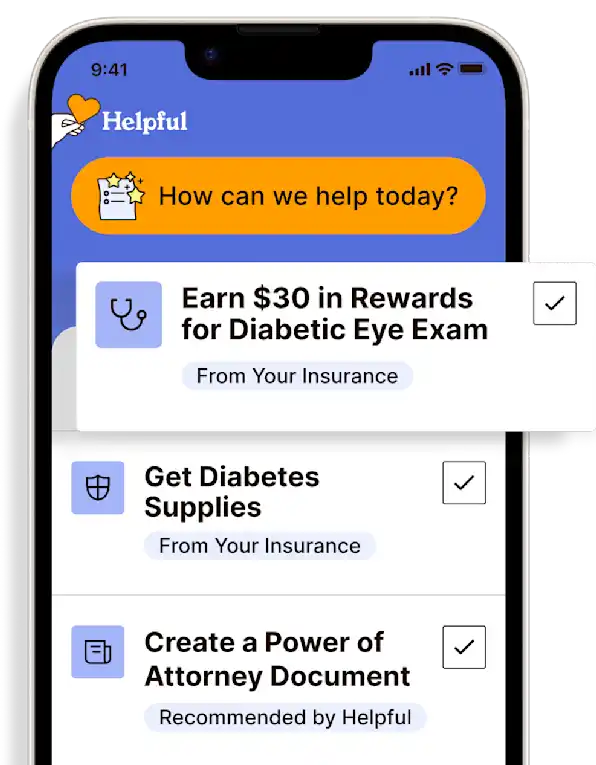Helping Your Loved One Get the Right Prescription for Glucose Monitors
Here’s a step-by-step guide to help ensure your loved one receives the right Glucose Monitors.
Get insurance benefits, legal documents, and medical records in one place

When it comes to ensuring your loved one receives the right Glucose Monitors at home, navigating the process can feel overwhelming. But don't worry – with a bit of guidance and the right information, you can make this transition smoother and more comfortable for them. Here’s a step-by-step guide to help you through this important process.
1. Gather Your Loved One’s Information
Start by collecting all the necessary details about your loved one. You’ll need:
Name
Date of Birth
Address
Phone Number
Insurance Information (Insurance Company Name)
2. Obtain Medical Provider Information
Next, you’ll need to connect with your loved one’s medical provider. Gather their information, which includes:
Name
Specialty
Address
Phone Number
Fax Number
4. Secure a Prescription for Glucose Monitors
Your loved one’s medical provider will need to fill out a prescription for Glucose Monitors. Ensure your loved one’s medical provider includes the following information:
NPI (National Provider Identifier): [Medical Provider NPI]
Date of Prescription: [Date Prescription Issued]
Basic Coverage Criteria for Home Blood Glucose Monitors (BGM):
Confirm diagnosis of diabetes (refer to applicable ICD-10 code list).
Certify patient (or caregiver) has sufficient training with prescribed device, evidenced by providing a prescription for supplies and testing frequency.
Special Features for Home BGM:
Certify necessity for special monitoring system if severe visual impairment is present (best corrected visual acuity of 20/200 or worse in both eyes).
Certify necessity for special monitoring system if impairment of manual dexterity exists.
Coverage for Glucose Monitor Accessories and Supplies:
Confirm prescription for lancets (A4259), blood glucose test reagent strips (A4253), glucose control solutions (A4256), and spring-powered lancet devices (A4258).
Ensure prescription adheres to quantity limitations (e.g., one spring-powered device (A4258) per 6 months).
Quantity of Testing Supplies:
Assess patient's usual medical needs based on insulin treatment.
If non-insulin-treated:
Prescribe up to 100 test strips and up to 100 lancets every 3 months.
If insulin-treated:
Prescribe up to 300 test strips and up to 300 lancets every 3 months.
High Utilization Criteria:
If patient's usage exceeds usual utilization guidelines, ensure prescription includes evaluation by treating practitioner and adherence verification every six months.
Coverage for Continuous Glucose Monitors (CGMs):
Confirm diagnosis of diabetes mellitus (refer to applicable ICD-10 code list).
Certify patient (or caregiver) has sufficient training with prescribed CGM, evidenced by providing a prescription.
Prescribe CGM in accordance with FDA indications for use.
Ensure patient meets at least one of the following criteria:
Insulin-treated.
History of problematic hypoglycemia (as per policy documentation requirements).
Final Steps: Provider's Responsibility
Submit the Documentation: While it's important for you to gather all the necessary information, your loved one's medical provider is responsible for submitting the prescription and supporting documents to the insurance company or the appropriate durable medical equipment (DME) vendor.
Follow Up: Check in with your loved one’s provider to ensure the prescription is being processed and to address any potential issues promptly.
Encouragement and Support
Remember, you’re not alone in this process. It’s natural to feel a bit daunted, but every step you take brings your loved one closer to the comfort and care they need. Lean on your medical provider for support and don’t hesitate to ask questions. Your diligence and care make a world of difference.
By following these steps and collaborating with your loved one’s medical provider, you’ll help ensure your loved one receives the appropriate Glucose Monitors to meet their medical needs and improve their quality of life at home.
Get more support and guidance on insurance benefits, medical records and legal forms.
Helpful brings together your insurance benefits, legal documents, and medical records in one personalized place — so you always know what you have, and never have to search again.

Technology for Health Tasks. Mental Health for the Tough Stuff.
Helpful connects your medical records, insurance, and caregiving tasks automatically. And when you need more than logistics, a therapist is here to guide you.
In-Network and Covered
For Individuals, Couples and Families
HIPAA Compliant, Data Stays Private


Healthcare Tasks Simplified

From syncing records to spotting drug interactions, Helpful does the heavy lifting, turning complex health info into clear tasks and showing you benefits you can actually use, giving you clarity and control over your care.

In-Network Mental Health

Our licensed therapists are here to support you and your loved ones through stress, burnout, and life’s hardest moments, with an inclusive, compassionate approach that works with most insurance plans.

Create Legal Documents

Plan ahead by creating will, trusts, advance directives and more, that ensure your wishes are honored in the event you can’t speak for yourself -with Helpful guiding you every step of the way.